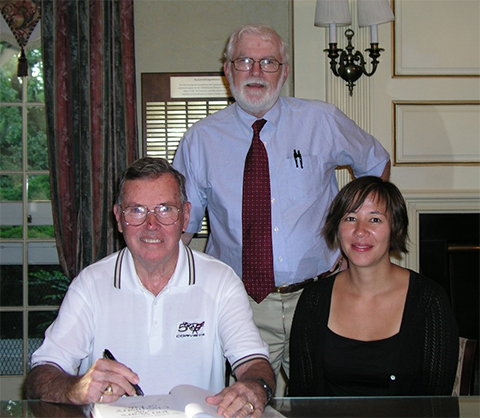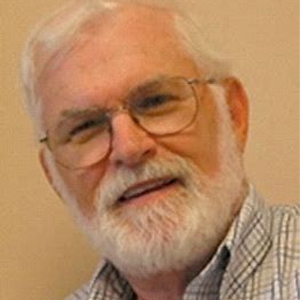
The ASBMB and me
I was elected to membership in the American Society of Biological Chemists (now the American Society for Biochemistry and Molecular Biology) in 1971 and was appointed to the editorial board of the Journal of Biological Chemistry two years later. Thus, my association with the society spans some 50 years, and it is a period dotted with pleasant memories of camaraderie, exciting opportunities and major challenges — all recalled with a sense of time and effort well spent.
Although I was involved in many ASBMB activities, three stand out: serving as treasurer from 1991 to 1997, launching Molecular & Cellular Proteomics in 2000 and co-writing the society’s 100-year history in 2009.
Managing the money
My two terms as ASBMB treasurer followed on the heels of a three-year term as a Council member, a period when the leadership of the society struggled in its relationship with the Federation of American Societies for Experimental Biology. As FASEB underwent a substantial reorganization, the ASBMB financial picture changed, and I spent much of my first term restructuring the budget with astute fiscal insight from Chuck Hancock (the society’s executive officer) and the Finance Committee, whose members included Emil Smith and Herb Tabor. Our efforts stabilized the ASBMB’s reserves and set the stage for the most exciting event of my time in this office: the creation of the eJBC.
By 1990, JBC had an annual content of 22,000 pages. Largely to address issues associated with accelerating growth, the journal began to shift away from an all-print publication by offering a CD-ROM version. This solved some of the problems of storing the print edition, but it was not popular, and it soon became clear that an alternative strategy was needed. Publishing the JBC on the internet was an obvious solution, an idea that was championed by Stanford University professor Bob Simoni, an associate editor, and Stanford University librarian Michael Keller. It was a giant and fiscally risky leap into the unknown. JBC had become the ASBMB’s major source of revenue, and any plan that negatively affected its financial structure would seriously compromise other society activities.
As the fiscal watchdog, I was asked to sit in on all the planning sessions as the pros and cons of this daring proposal were evaluated. With no guarantee it would work, technically or financially, the society’s leaders decided in January 1995 to launch JBC Online in time for that year’s annual meeting in April in San Francisco.
It was a hectic three months, but through the yeoman efforts of the ASBMB staff (particularly Barbara Gordon, our former executive director, who was director of publications at the time); Cadmus Journal Services personnel; and the Stanford team, it was accomplished, to the delight and amazement of several thousand meeting attendees.
JBC became the first research journal in the biological sciences to publish on the internet. The subsequent stampede of journals to go online demonstrated that it was an idea whose time had come.
Launching a journal
In May 2000, the leadership held a retreat to review various ASBMB activities. The group assigned to consider publications proposed that the society should start a new journal, and the rapidly growing discipline of proteomics was its first choice. In a subsequent exchange with Dick Hanson, then ASBMB president, I strongly supported this idea, and he encouraged me to draft a proposal for consideration at an upcoming Council meeting in Boston.
Although I had trained as a protein chemist (and always considered that to be my principal description), I was only superficially involved in proteomic research and recognized that I needed a partner who was more legitimately associated with this area. I contacted Al Burlingame at the University of California, San Francisco, and recruited him with a minimum of cajoling. The proposal, with myself as editor and Al as deputy editor, was prepared and approved. Over the next year, we created a detailed plan, and the journal name, Molecular & Cellular Proteomics, was trademarked. The finance and publications committees and Council approved the plan, and MCP was launched a year later.
Unlike JBC, MCP’s financial structure was based on the online version, and for the first year it was distributed without charge. As a result, it accrued a lot of red ink and took several years to reach a break-even point. As editor, I had to meet regularly with the Finance Committee that I had chaired a few years before. Sitting on the opposite side of the table and enduring constant barbs until we turned the profitability corner was the least rewarding part of the MCP launch. The journal’s rapid success and international acclaim were a soothing balm for these wounds.
Writing the history
The ASBMB celebrated its 100th anniversary in 2006. A plaque was dedicated commemorating the society’s first organizational meeting in the Belmont Hotel in New York City on December 29, 1906. My wife, Penny, and I were among a small group of officers, members and friends gathered in the Altria Building (which now stands where the Belmont Hotel did) for a brief ceremony. Michael Bloomberg, then the mayor of New York, issued a proclamation declaring December 28, 2006, to be ASBMB Day (a day early, but it was the closest we could get).

I already was working on a book documenting the first 100 years of the society. Parts of the early history of both the society and JBC had been written previously, but a great deal remained to be recorded, and the project, as these things are prone to do, kept expanding.
Originally, Bob Hill agreed to write about the second half of the century while I focused on the first 50 years, but he had to drop out, so Chuck Hancock and I took over his part. Nicole Kresge, then editor of ASBMB Today, organized biographical sketches of the 80 presidents who had served over the century, and several other individuals contributed material for the later chapters.
The 522-page finished work, “The ASBMB Centennial History: 100 Years of the Chemistry of Life,” was published in 2009. With planning, data gathering and writing, it was a major effort but one I am extremely proud of. I do not begrudge any of the many hours I spent on it. I hope the writers of the next 100 years’ history of the ASBMB will find it useful.
These three vignettes capture only a small slice of my ASBMB experiences, but I hope they convey the satisfaction I have enjoyed from my half century with the society. The ASBMB has been a large and rewarding part of my professional life and has enriched my enjoyment of science and my chosen career.
Other Fellow articles
Paul Craig: People in the ASBMB have changed my life
Susanna Greer: Saying yes to a community of communicators
Nathan Vanderford: Investing in the next generation
Alex Toker: An unpredictable journey
Enjoy reading ASBMB Today?
Become a member to receive the print edition four times a year and the digital edition monthly.
Learn moreGet the latest from ASBMB Today
Enter your email address, and we’ll send you a weekly email with recent articles, interviews and more.
Latest in Opinions
Opinions highlights or most popular articles

The tortoise wins: How slowing down saved my Ph.D.
Graduate student Amy Bounds reflects on how slowing down in the lab not only improved her relationship with work but also made her a more productive scientist.

How pediatric cataracts shaped my scientific journey
Undergraduate student Grace Jones shares how she transformed her childhood cataract diagnosis into a scientific purpose. She explores how biochemistry can bring a clearer vision to others, and how personal history can shape discovery.

Debugging my code and teaching with ChatGPT
AI tools like ChatGPT have changed the way an assistant professor teaches and does research. But, he asserts that real growth still comes from struggle, and educators must help students use AI wisely — as scaffolds, not shortcuts.

AI in the lab: The power of smarter questions
An assistant professor discusses AI's evolution from a buzzword to a trusted research partner. It helps streamline reviews, troubleshoot code, save time and spark ideas, but its success relies on combining AI with expertise and critical thinking.

How AlphaFold transformed my classroom into a research lab
A high school science teacher reflects on how AI-integrated technologies help her students ponder realistic research questions with hands-on learning.

Writing with AI turns chaos into clarity
Associate professor shares how generative AI, used as a creative whiteboard, helps scientists refine ideas, structure complexity and sharpen clarity — transforming the messy process of discovery into compelling science writing.

